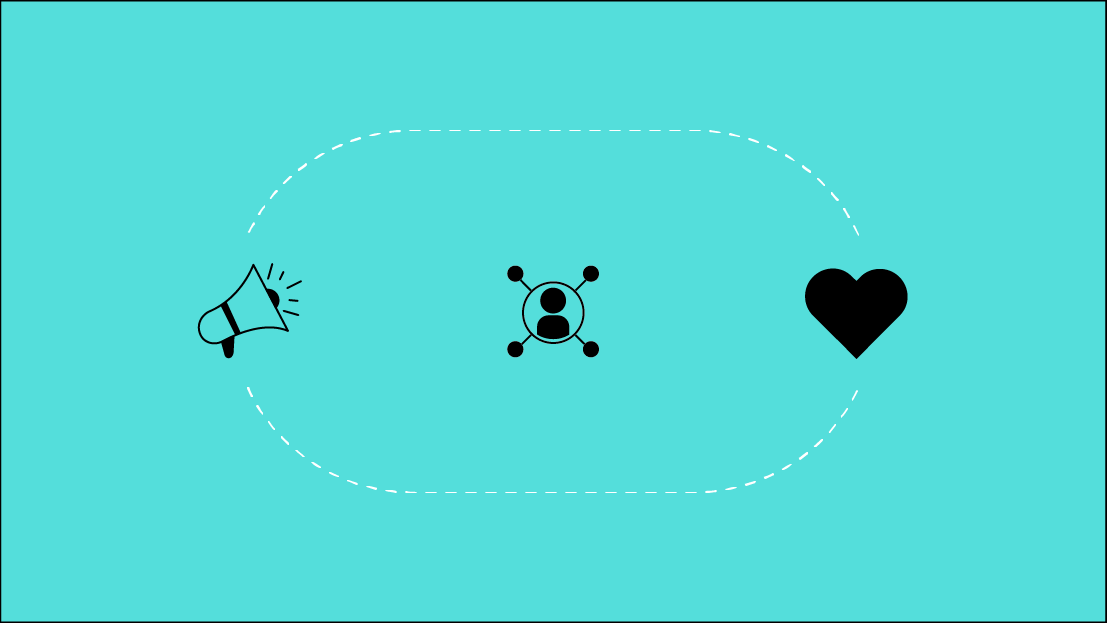Let's talk about listening.
![]()
Listening is a skill. It’s not an automatic human function like a heartbeat. It takes effort, work, focus, and if you’re going to do it well you need to be aware you’re doing something.
With remote work en masse, we're without our normal social cues and in-room dynamics. A high function of live communication is our ability to read and get an actual feel from body language, eye contact, and the other person's physical presence in a given setting.
Think about it - gestures are pre-speech.
Language is estimated to have been around for, at the latest, about 200,000 years. But we’ve been communicating and cooperating far longer than that. Our movements and glances and gestures - being without these, or adjusting to experiencing them through a camera, are going to leave us without a key element to dialog and group communication.
There are moments in a discussion when the actual vibrations of the room change or a point you've made creates static electricity in the atmosphere - you get the idea.
Think of how much you can express without words.
Pre-language we relied on these instincts for survival. They are hardwired into who we are because those instincts are what got our genes to today.

Even without speech, this face is still communicating a lot of information. (source)
Even the tone of our voice reveals a lot about our intent. In his book, The Singing Neanderthals, Stephen Mithen walks through his belief that after movements and non-verbal communication came the “proto hum,” where grunts and noises characterized by certain vocal tones indicated different meaning. Pitch and prosody can dramatically alter the entire emphasis of a statement. It’s one of the first developmental aspects we learn as babies, where we understand tones before we understand words.
In speech, we don’t see punctuation, so we inflect it with our breath and it is ultimately how we know if something is a statement or a question.
The upward inflection at the end of a string of words usually indicates a question mark. And if we’re audience to this it’s our cue to fill in the silence with an answer to that question. It’s another reason why monotone speakers who give no effort to inflection have a tendency to be punishingly boring communicators.
It takes commitment to truly listen to someone. You need to understand where someone is coming from even if you disagree with them. Going further, it’s important to avoid the ‘curse of knowledge’ and giving someone the space and benefit to simply not know what you know.
Listening Positions
Listening isn’t a single dimension. There are several listening positions, and becoming familiar with them can benefit communication by allowing you to become more conscious of what your own default listening style is, as well as to have a better understanding to determine the appropriate means of listening for a given discussion. What are the positions of listening?
Active listening:
Active listening is classically used in the healing professions and education. It’s a dimension of listening well-suited for addressing conflict or diffusing the upset or unhappy. It can leave someone feeling heard and understood, which can be a very rare feeling for some.
Paraphrasing is a great technique to utilize in active listening. When someone has finished their statement, you can repeat back to them, “What I heard you say is…” and re-state their position without your own coloring or assumptions built in. We see the opposite of this in political rhetoric, where one side will say X, and the other side will strawman that position by incorrectly paraphrasing “Oh, so what you’re really saying is Y.”
Active listening is especially useful in customer service and allows others to be heard and have their views respected.
Passive listening:
Passive listening can be as simple as just savoring the sounds you’re experiencing. There’s no meaning making or interpretation, it’s just selecting a sound and listening to it. Passive listening is more on the automatic side of what our ears do as a function.
An example of passive listening might include having the television on without hanging on to any of the actual dialog. It’s there. It’s happening. But you’re not tuned in or investing any effort in understanding and reflecting on what’s really going on.
Critical listening:
Critical listening is a filter where you’re constantly having a voice in your head ask “do I agree with this? Is this even useful? Is it even true?” This can be a very effective way to listen during brainstorms or discussions around strategy, where ideas should be taken to the mat and put through the rigor or varying scenarios.
It can also cloud the listening experience if used incorrectly. Depending on the context, this probably isn’t the best listening position to use during a heart-to-heart or in certain relationship settings.
To add a meta layer, be critical of your own critical listening. Be conscious and in check when this little voice becomes louder and louder and try to avoid bringing it to every topic of discussion.
Empathic listening:
Empathic listening is working to genuinely identify with what the other person is saying and going through non-judgmentally.
When used appropriately, this can help build intimacy and closeness and leave someone feeling they’ve been understood on a broader emotional plane.
If you’re in an empathic listening position, it’s generous to thank someone for trusting you enough to receive what they’re sharing. Acknowledge their emotions and try a phrase such as “Thank you for sharing this with me.“
Reductive listening:
Reductive listening is transactional. Here’s the problem, here’s the solution - there’s very little else this position provides. Reductive listening boils down whatever elements of a statement will ultimately lead to a solution.
There’s very little extracted as far as emotional content, so this position is usually best used for tackling something logical or for clinical sense-making.
Expansive listening:
Expansive listening can be a journey of sounds. This is best used when there’s not necessarily a rational discussion being had. There isn’t any hurrying or even a point at times. It’s usually not used for problem solving, but simply being with the other person with wherever the dialog takes you.
Distracted listening:
Perhaps the most pernicious, distracted listening occurs when you’re simply not paying attention. We’re all guilty of this, and in our always-connected distraction-filled world it’s an inevitability that we are all going to be in this position regularly. You’re on a call, receiving emails, responding to Slacks and Chats and texts, and opening more tabs in your already crowded browser to tee up your next events.
That’s OK. It’s fine to be a human and to be here, but we must recognize when we are and reflect on what could be causing these distractions. Is it something we can control? Is it out of our control and we need to take a moment to get our mental feet back under us? Take that moment and do just that, and if you’re far too distracted without relief in sight, politely defer your discussion to when you’re better able to focus and provide a more appropriate listening position.
And more:
There are almost certainly others, as well as blends of these. We don’t experience listening in a vacuum, so simply try to listen in a more productive way. How you speak affects how I listen. How I listen affects how you speak. We’ve all noticed when those with which we’re speaking orient themselves in the incorrect listening position and adjust how we then speak to them.
Ask yourself: how can you better leave someone heard and understood in a conversation?
What’s your natural listening position?
![]()
Recognize when you’re stuck in one of these listening positions. Being able to adjust them is fundamentally how we can relate better to others. Ask yourself:
- Is this the most effective listening position for this situation?
- If not, practice consciously moving to a more effective position each time you are in that situation
It’s not easy to change the habits of a lifetime, so it will take persistence. The sooner you practice awareness, the sooner you’ll build up that awareness and become much more able to assess and shift to ideal positions in every situation. It’s one step closer to becoming a brilliant, conscious listener.
RASA
Rasa is a Sanskrit word that literally translates to ‘flavor’ or ‘essence.’ It’s also a great acronym to ground yourself in when playing the role of listener.
Receive
- Be mindful of your body language. Face the person who is speaking (or simply face your webcam), try to make eye contact with the speaker, and be aware of your facial expressions.
- “Eye contact” with those through a computer is certainly something you’ll have to develop, but try your best. Mute chat, avoid multitasking, minimize your own presence on the video so you’re not stuck looking at yourself, and receive the discussion being had.
Appreciate
- Feedback and signals can help oil a conversation
- Sitting in silence for too long can make someone think you’re daydreaming
- Even eyebrow raises or slight nods - demonstrate that you’re with that person and appreciating them
- This can be a challenge to balance with small (or large) delays in video conferencing, where we tend to mistake the timing of certain cues and our “ah, yes I see” signal for the speaker to continue can trip up the entire conversation. To minimize this, try to practice your mute button skills and simply give them polite nods and smiles as they proceed.
Summarize
- It helps to clarify certain points before moving onto others
- “So, just to clarify...” can be a megaton of enlightenment. Better to spend time confirming facts real-time than to think everyone shares a mutual understanding and projects go wrong down the line. A little proactive clarification can go an incredibly long way.
Ask
- Asking open-ended questions will usually get you more meaningful, context-rich answers.
- Open-ended questions can help discussion points build off of each other and create a more productive discussion
- Ask closed-ended questions when you need a direct, binary answer
- Closed-ended questions should be asked when the answer must be simply a “yes” or a “no”
- Leading questions can be asked to influence someones thinking down a certain path or to think in a certain way. Be careful when using these and beware of those who use them on you incorrectly
- Leading questions can be used wrongfully when they inject the answer we’re looking for in the question itself
- Understand the different types of questions and the ones that will best achieve your intentions of that discussion
Silence
Silence seems to be more and more of a commodity these days. ‘In Pursuit of Silence’ is a beautiful film examining how rare silence truly is in our modern, noisy world. Silence can be used very effectively in conversations and communication, but to just generally give your ears a break, try to find quiet moments to truly experience some peaceful silence yourself.
If silence emerges in a discussion, don’t allow it to make you uncomfortable. Allow the other person the moment they need to collect themself, think through something more intentionally and less hurriedly, or begin to form a new train of thought for their next topic of discussion.
Try applying some of these listening techniques and lessons to your next virtual meeting. Share them with your team, talk about them with your company, comment with some feedback on what’s worked for you and what hasn’t. The better we listen the better we communicate, and the better we communicate the better we understand and relate to each other.
Sign up for our newsletter for more posts like this - delivered straight to your inbox!


